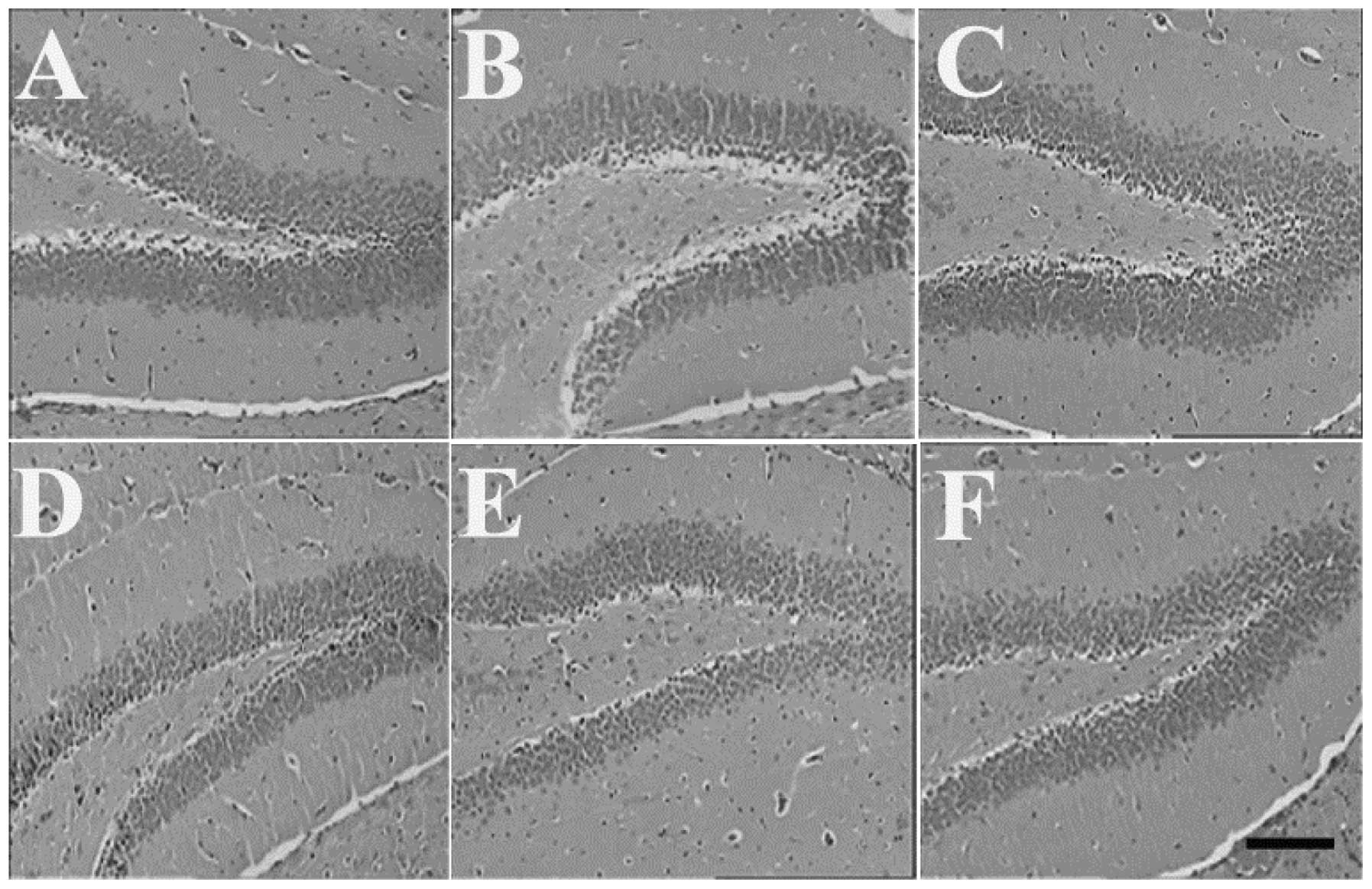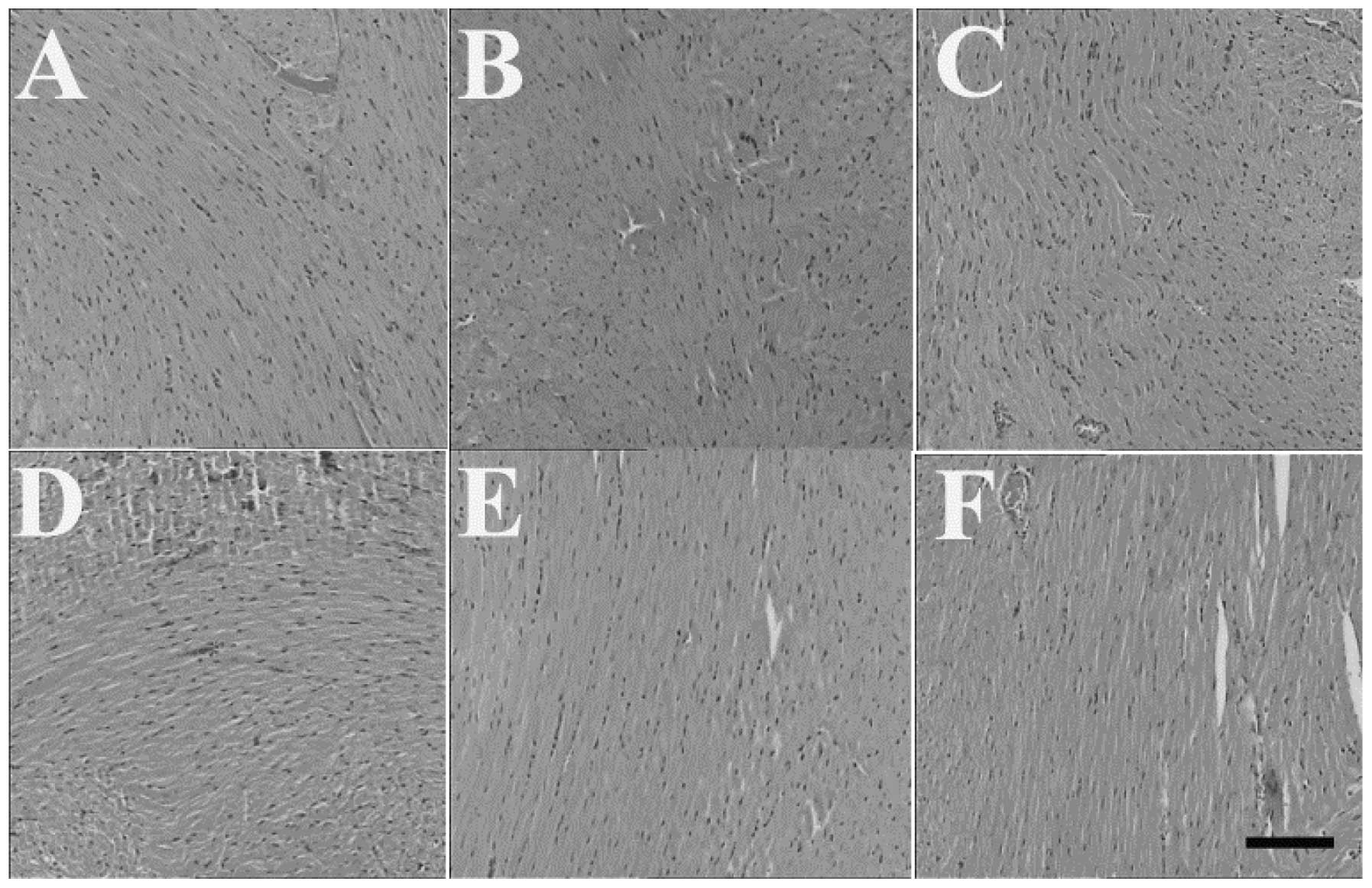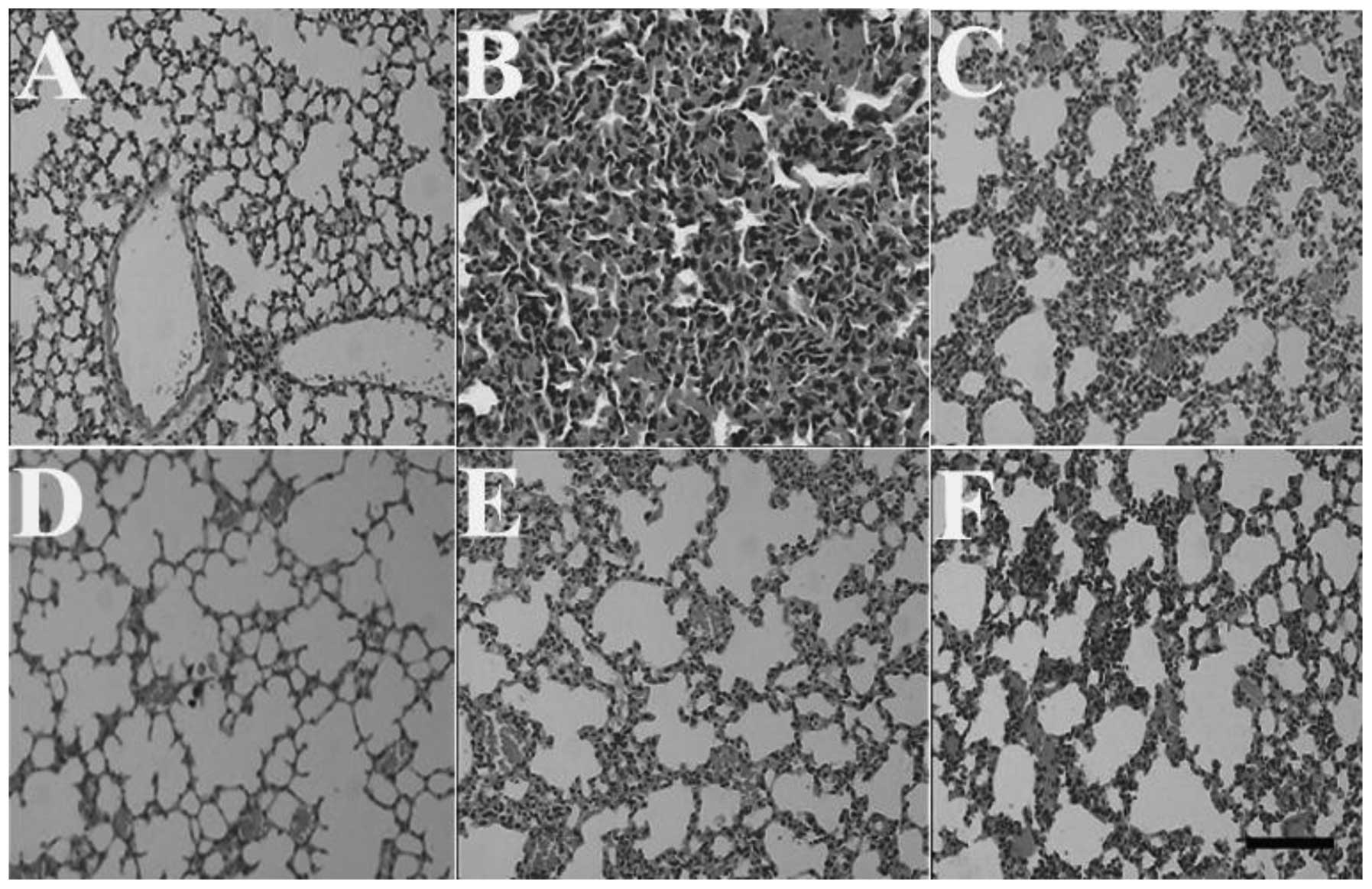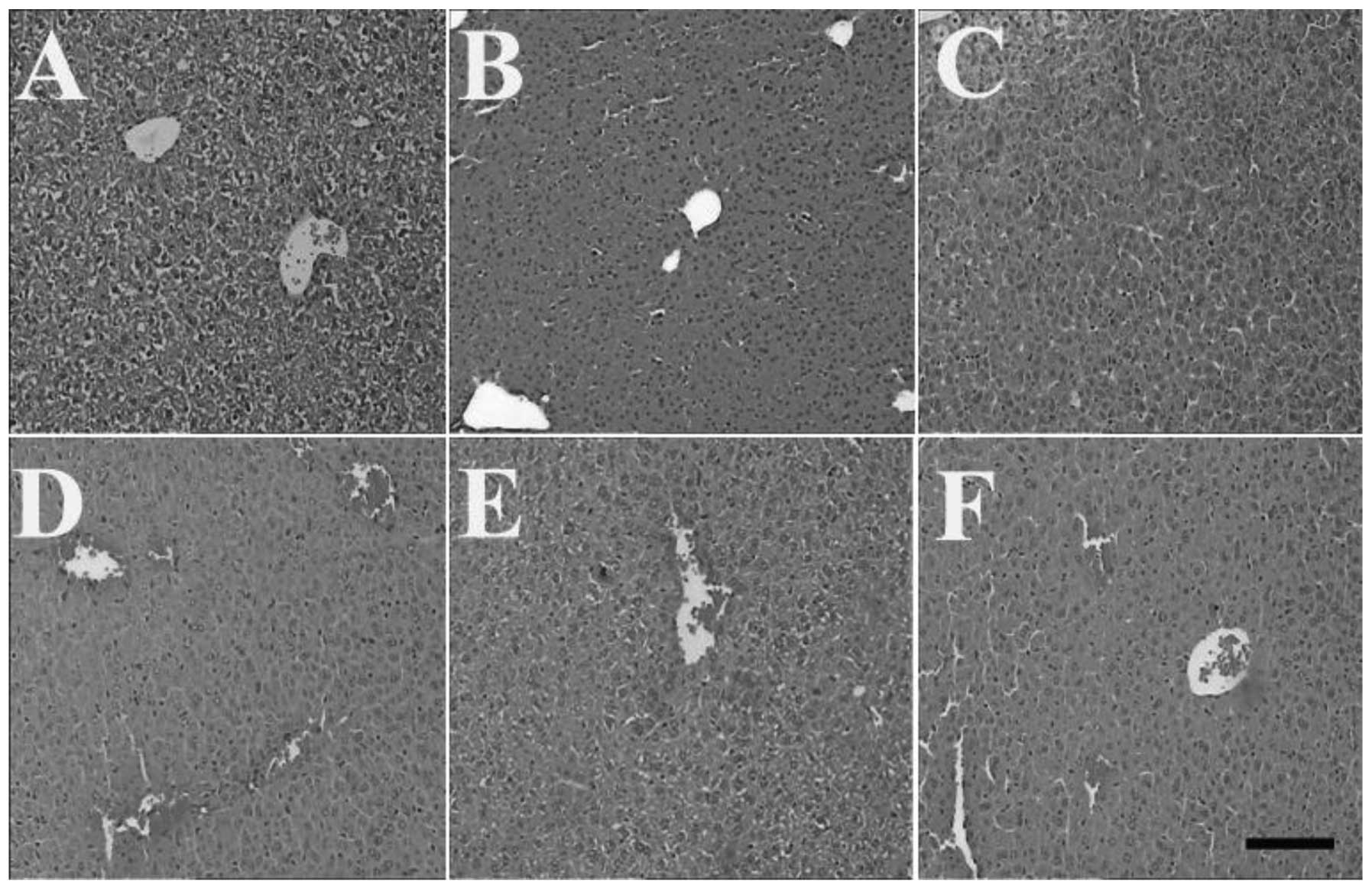A novel approach to medical countermeasures against organophosphorus compound toxicity
- Authors:
- Published online on: September 25, 2013 https://doi.org/10.3892/br.2013.172
- Pages: 901-906
Abstract
Introduction
Organophosphorus compounds (OPs) are commonly used in agriculture as insecticides. Acute OP intoxication results primarily from the irreversible inhibition of acetylcholinesterase (AChE), which leads to acetylcholine accumulation and, consequently, overstimulation of cholinergic receptors in the peripheral and central nervous systems. Exposure to OPs is responsible for a significant number of deaths by poisoning annually (1).
The therapeutic strategies to decrease OP toxicity include atropine, to reduce the muscarinic syndrome, and pralidoxime, to reactivate OP-inhibited AChE (2). However, AChE inhibition by certain OPs may be refractory to reactivation by the clinically available oximes. Consequently, the fatality rate from OP poisoning remains high, despite treatment. Therefore, there is a need for a novel medical countermeasure for individuals who are prone to OP poisoning.
It was previously demonstrated that antibodies exhibited scavenger characteristics in the detoxication of OP poisoning (3). However, the limitations of immunotherapy are well recognized, as it takes a long time to provoke a potent antibody response against OP intoxication. It was demonstrated that pretreatment with physostigmine may protect against the incapacitating and lethal effects of OP poisoning (4). It was also demonstrated that OP toxicity and lethality are counteracted when galantamine is administered prior to acute exposure of guinea pigs to OPs (5). However, the ultimate usefulness of pyridostigmine and galantamine is questionable, as the time period during which they are effective against OPs intoxication is limited.
Huperzine A (HupA), an alkaloid isolated from the Chinese club moss Huperzia serrata, has been established as a slow, reversible inhibitor of AChE at the peripheral and central level (6). HupA sustained-release microspheres (HSMs), a new formulation of HupA, were prepared by an oil/water solvent evaporation technique loading poly(D, L-lactic-co-glycolic) acid (PLGA) microspheres with HupA. Following intramuscular injection of HSMs in mice, HupA was steadily released from the PLGA microspheres and the AChE activity was continually inhibited for 14 days (7). The present study aimed to investigate whether HSM pretreatment is effective in counteracting the toxicity of OPs.
Materials and methods
Drug and chemicals
Methyl parathion (MP) (80%, w/w) was obtained from Shandong Dacheng Pesticide Co., Ltd.(Zibo, China). The HSMs were provided by Shandong Luye Pharmaceutical Co., Ltd. (Yantai, China).
Animals
A total of 370 Swiss mice, weighing 20–22 g, were provided by the Experimental Animal Center of the Shandong Engineering Research Center for Natural Drugs (Yantai, China). The animals were housed in a climate-controlled room, maintained on a 12 h/12 h light/dark cycle and had ad libitum access to food and water. The experiments were performed according to the National Institute of Health Guidelines for the Care and Use of Laboratory Animals (publication no. 86-23, revised in 1986) and were approved by the local Ethics Committee. All efforts were made to minimize the number of animals used and their suffering.
Acute toxicity of MP in HSM-pretreated mice
The mice were randomly divided into 5 groups (n=50 mice/group) as follows: control, 2-h HSMs, 5-day HSMs, 10-day HSMs and 15-day HSMs groups. According to the doses of MP, the mice were further subdivided into 5 subgroups (n=10 mice/subgroup) (Table I). After fasting for 12 h, the mice in the control group were treated intramuscularly with 2.5% (w/v) sodium carboxymethyl cellulose. The mice were then challenged by a single intragastric exposure to MP at doses of 43.0, 47.8, 53.1, 59.0 and 65.6 mg/kg. The mice in the 2-h HSMs subgroups were treated intramuscularly with HSMs at a dose of 1.5 mg/kg. Two hours later, they were intragastrically challenged with MP at doses of 59.0, 65.6, 72.9, 81.0 and 90.0 mg/kg. The mice in the 5-day HSMs subgroups were treated intramuscularly with HSMs at a dose of 1.5 mg/kg. Five days later, they were intragastrically challenged with MP at doses of 53.1, 59.0, 65.6, 72.9 and 81.0 mg/kg. The mice in the 10-day HSMs subgroups were treated intramuscularly with HSMs at a dose of 1.5 mg/kg. Ten days later, they were intragastrically challenged with MP at doses of 53.1, 59.0, 65.6, 72.9 and 81.0 mg/kg. The mice in the 15-day HSMs subgroups were treated intramuscularly with HSMs at a dose of 1.5 mg/kg. Fifteen days later, they were intragastrically challenged with MP at doses of 47.8, 53.1, 59.0, 65.6 and 72.9 mg/kg. The general behavior and signs of toxicity in mice were observed continuously for 1 h following MP administration and then intermittently for 4 h over a period of 24 h. The mice were further observed once a day up to 14 days for behavioral changes and signs of toxicity and/or death. The value of the median lethal dose (LD50) was determined as previously described (8).
Evaluation of HSM pretreatment on MP poisoning
The mice were randomly divided into 3 groups (n=40 mice/group): Control, MP and HSMs groups. The mice in the control group were further subdivided into 4 subgroups: 2-h, 5-day, 10-day and 15-day control subgroups. The mice in the MP group were further subdivided into 4 subgroups: 2-h, 5-day, 10-day and 15-day MP subgroups. The mice in the HSMs group were further divided into 4 subgroups: 2-h, 5-day, 10-day and 15-day HSMs subgroups. The mice in the control subgroups were treated intramuscularly with 2.5% (w/v) sodium carboxymethyl cellulose. Two hours, 5, 10 and 15 days later, they were intragastrically administered distilled water. The mice in the MP subgroups were treated intramuscularly with 2.5% (w/v) sodium carboxymethyl cellulose. Two hours, 5, 10 and 15 days later, they were intragastrically administered MP at a dose of 60.0 mg/kg (1.2 × LD50). The mice in the HSMs subgroups were treated intramuscularly with HSMs at a dose of 1.5 mg/kg. Two hours, 5, 10 and 15 days later, they were intragastrically administered MP at a dose of 60.0 mg/kg. The general behavior and signs of toxicity in mice were observed continuously for 1 h after the MP administration and then intermittently for 4 h over a period of 24 h. The mice were further observed once a day up to 14 days for behavioral changes and signs of toxicity and/or death. Acute reactions to treatment were scored according to a modified Racine scale (9). Whenever animals developed life-threatening signs of intoxication, such as gasping and unremitting motor convulsions, they were euthanized according to the Institutional Animal Care and Use Committee-approved protocol.
Histopathological analysis
Following euthanasia, the brain, heart, liver, lungs, kidneys and intercostal muscles of the mice were harvested. Subsequently, paraformaldehyde (4%)-fixed, paraffin-embedded samples were cut into 4-μm sections, deparaffinized in xylene and rehydrated through a series of decreasing concentrations of ethanol. The sections were stained with hematoxylin and eosin and pathological observation of the tissues was performed under a light microscope.
Statistical analysis
In order to calculate the LD50, a linear regression analysis corrected for the number of animals at each dose level was used. The proportion of dead mice and the logarithmic transformed dose levels were used as the dependent and independent variables, respectively. The survival rates were compared using the Kaplan-Meier log-rank test. P<0.05 was considered to indicate a statistically significant difference.
Results
Effect of HSMs on the LD50 of MP
The LD50 of MP in the mice of the control group was 51.4 mg/kg. Compared to the control group, animals in the 2-h, 5-day and 10-day HSMs groups were more resistant to the toxic effects of MP (LD50=70.0, 67.5 and 63.4 mg/kg, respectively). However, the LD50 value of MP in the 15-day HSMs group (53.5 mg/kg) was the same as that of the control group (Table II).
Effect of HSMs on the acute toxicity of 1.2 × LD50 MP
Within 25 min after a single intragastric administration of MP at a dose of 60 mg/kg, ~40% of the mice developed a cholinergic crisis characterized by chewing, miosis, hypersecretion, diarrhea, bruxism, muscle fasciculations and tremors. According to the Institutional Animal Care and Use Committee-approved protocol, the animals were euthanized as soon as signs of intoxication became life threatening. Approximately 20–40% of the mice survived for 24 h after exposure to 1.2 × LD50 MP.
Effects of HSMs on the manifestation of MP poisoning in mice
Following MP exposure, all the mice in the 2-h HSMs group survived, with no apparent toxic signs. The mice in the 5-day and 10-day HSMs groups developed mild adverse symptoms, such as increased chewing, hypersalivation and tremors. The toxic signs in the mice of the 2-h, 5-day and 10-day HSMs groups were significantly attenuated. Furthermore, the 24-h survival of the animals in the 2-h, 5-day and 10-day HSMs groups was 100, 90 and 80%, respectively (P<0.05 or P<0.01). The animals in the 15-day HSMs group developed severe signs of intoxication, with a 24-h survival of 30% (Table III).
Effects of HSMs on histopathological changes induced by MP poisoning
The examination under a light microscope revealed a normal structure of the brain, heart and kidneys of the control animals. The brain, heart and kidneys of the mice in the MP and HSMs groups also revealed no histological changes (Figs. 1, 2 and 3, respectively). However, the livers of the mice in the MP and HSMs groups displayed central vein congestion as a result of the exposure to MP. The lungs of the animals in the MP group exhibited a notable pulmonary edema that was characterized by edema and congestion of the alveolar septae. However, the histopathological changes of the lungs in the 2-h, 5-day and 10-day HSMs groups were significantly less prominent, whereas the histopathological changes of the lungs in the 15-day HSMs group were identical with those of the MP group (Fig. 4). Furthermore, pretreatment with HSMs did not attenuate the MP-induced central vein congestion in the liver (Fig. 5).
Discussion
In the present study, HSMs pretreatment was shown to increase the value of the LD50 and the survival of animals poisoned by MP. The results demonstrated that pretreatment with HSMs, even 10-days prior to MP exposure, may effectively counteract the toxicity of OPs.
MP poisoning leads to cholinergic overstimulation, with signs of toxicity such as sweating, dizziness, vomiting, diarrhea, convulsions, cardiac arrest, respiratory arrest and, in extreme cases, death. In toxicology, the median LD50 is frequently used as a general indicator of the acute toxicity of a substance. The LD50 of MP in the control group was 51.4 mg/kg. However, the LD50 values of the 2-h, 5-day and 10-day HSMs groups were 70.0, 67.5 and 63.4 mg/kg, respectively, which were equivalent to 1.36, 1.31 and 1.23 times the dose in mice without administering HSMs. There was no significant difference in the LD50 between the control group and the 15-day HSMs group. The acute toxicity of MP (1.2 × LD50) was also effectively counteracted by pretreatment with HSMs. Approximately 60–80% of the mice in the MP groups developed life threatening symptoms and were euthanized. By contrast, the mice pretreated with HSMs 2 h, 5 days and 10 days prior to MP exposure survived (100, 90 and 80%, respectively), with mild signs of toxicity. These results demonstrated the high, long-term effectiveness of HSMs against the toxicity of 1.2 × LD50 MP.
The organ injury caused by OP exposure in insects and humans is associated with the ability of the OPs to bind to AChE and prevent the hydrolysis of acetylcholine (10). The present study demonstrated that the histopathological changes of the lungs in the 2-h, 5-day and 10-day HSMs groups were significantly less prominent compared to those in the control group. It was previously demonstrated that respiratory failure is a prominent characteristic of acute OP poisoning (11) and that the morbidity and mortality of acute OP poisoning is associated with respiratory failure (12). Therefore, it is hypothesized that the effectiveness of HSMs is at least partly associated with ameliorating MP-induced pulmonary edema.
The development of an effective and safe approach against OP toxicity may help to reduce the mortality associated with OP poisoning worldwide. Our results indicated that pretreatment with HSMs effectively and safely counteracts OP poisoning and may therefore be of benefit to individuals who are prone to exposure to OPs or nerve agents. In conclusion, the present study demonstrated a novel approach to effectively protecting against OPs toxicity and nerve agent-induced organ injury or death.
Acknowledgements
This study was supported by the Project of Fundamental Study Funds of the Shandong Provincial Education Department (grant no. J11LF56), the Doctoral Foundation of Yantai University (grant no. YX12B30) and the Shandong Provincial Natural Science Foundation (grant no. ZR2010HQ049). The authors would like to thank Professor Lon Clark for the English language revision.
References
|
Soltaninejad K and Abdollahi M: Current opinion on the science of organophosphate pesticides and toxic stress: a systematic review. Med Sci Monit. 15:RA75–RA90. 2009.PubMed/NCBI | |
|
Bajgar J: Organophosphates/nerve agent poisoning: mechanism of action, diagnosis, prophylaxis, and treatment. Adv Clin Chem. 38:151–216. 2004. View Article : Google Scholar : PubMed/NCBI | |
|
Jia P, Wang Y, Yu M, et al: An organophosphorus hapten used in the preparation of monoclonal antibody and as an active immunization vaccine in the detoxication of soman poisoning. Toxicol Lett. 187:45–51. 2009. View Article : Google Scholar : PubMed/NCBI | |
|
Muggleton NG, Bowditch AP, Crofts HS, Scott EA and Pearce PC: Assessment of a combination of physostigmine and scopolamine as pretreatment against the behavioural effects of organophosphates in the common marmoset (Callithrix jacchus). Psychopharmacology (Berl). 166:212–220. 2003.PubMed/NCBI | |
|
Albuquerque EX, Pereira EF, Aracava Y, et al: Effective countermeasure against poisoning by organophosphorus insecticides and nerve agents. Proc Natl Acad Sci USA. 103:13220–13225. 2006. View Article : Google Scholar : PubMed/NCBI | |
|
Ashani Y, Peggins JO III and Doctor BP: Mechanism of inhibition of cholinesterases by huperzine A. Biochem Biophys Res Commun. 184:719–726. 1992. View Article : Google Scholar : PubMed/NCBI | |
|
Wang C, Zhang T, Ma H, Liu J, Fu F and Liu K: Prolonged effects of poly(lactic-co-glycolic acid) microsphere-containing huperzine A on mouse memory dysfunction induced by scopolamine. Basic Clin Pharmacol Toxicol. 100:190–195. 2007. View Article : Google Scholar : PubMed/NCBI | |
|
Choi SC: Interval estimation of the LD50based on an up-and-down experiment. Biometrics. 46:485–492. 1990. View Article : Google Scholar : PubMed/NCBI | |
|
Aracava Y, Pereira EF, Akkerman M, Adler M and Albuquerque EX: Effectiveness of donepezil, rivastigmine, and (+/−)huperzine A in counteracting the acute toxicity of organophosphorus nerve agents: comparison with galantamine. J Pharmacol Exp Ther. 331:1014–1024. 2009. | |
|
Lu L, Wang X, Lang L and Fu F: Protective effect of reduced glutathione on the liver injury induced by acute omethoate poisoning. Environ Toxicol Pharmacol. 30:279–283. 2010. View Article : Google Scholar : PubMed/NCBI | |
|
Munidasa UA, Gawarammana IB, Kularatne SA, Kumarasiri PV and Goonasekera CD: Survival pattern in patients with acute organophosphate poisoning receiving intensive care. J Toxicol Clin Toxicol. 42:343–347. 2004. View Article : Google Scholar : PubMed/NCBI | |
|
Tafuri J and Roberts J: Organophosphate poisoning. Ann Emerg Med. 16:193–202. 1987. View Article : Google Scholar |














